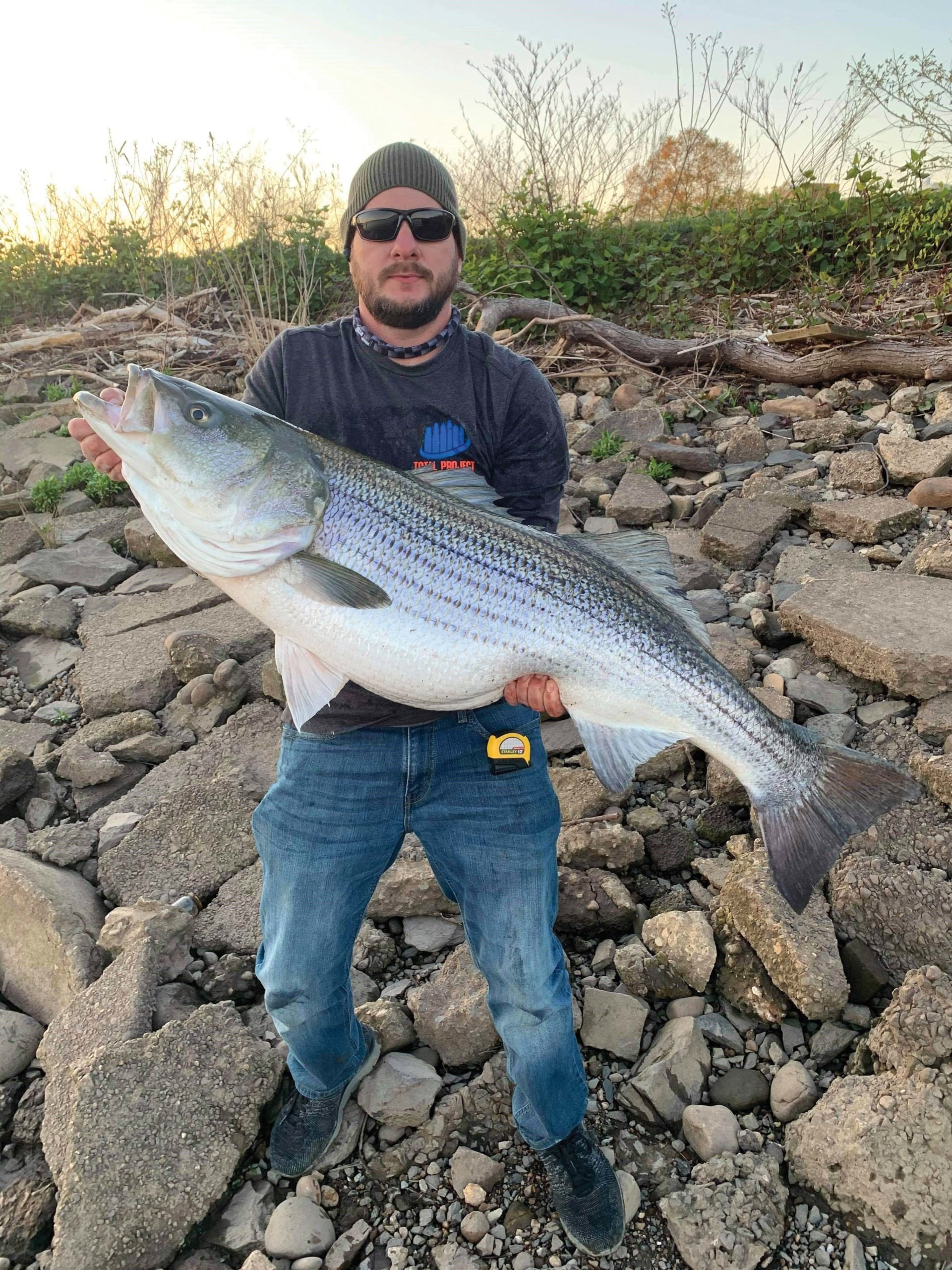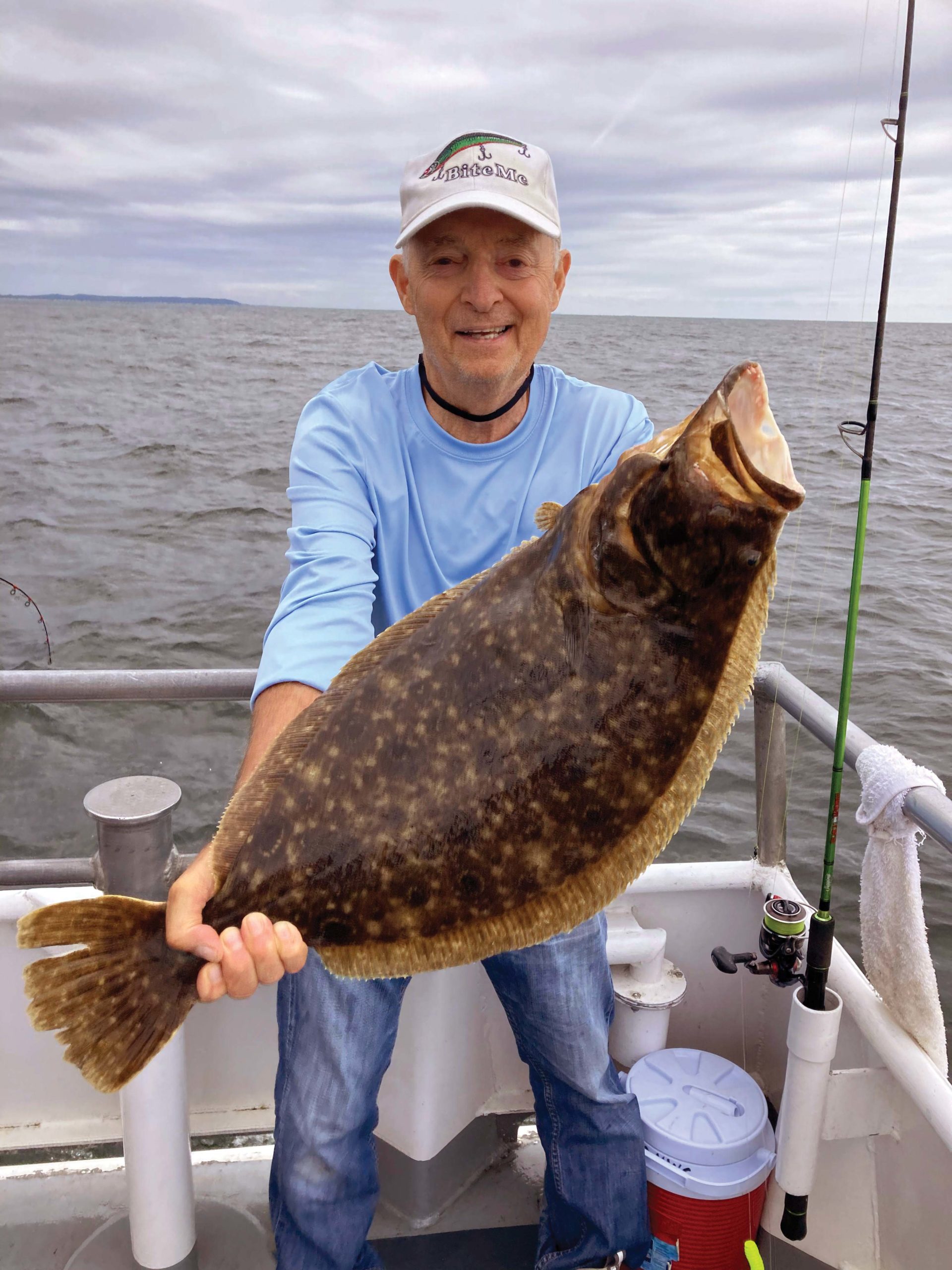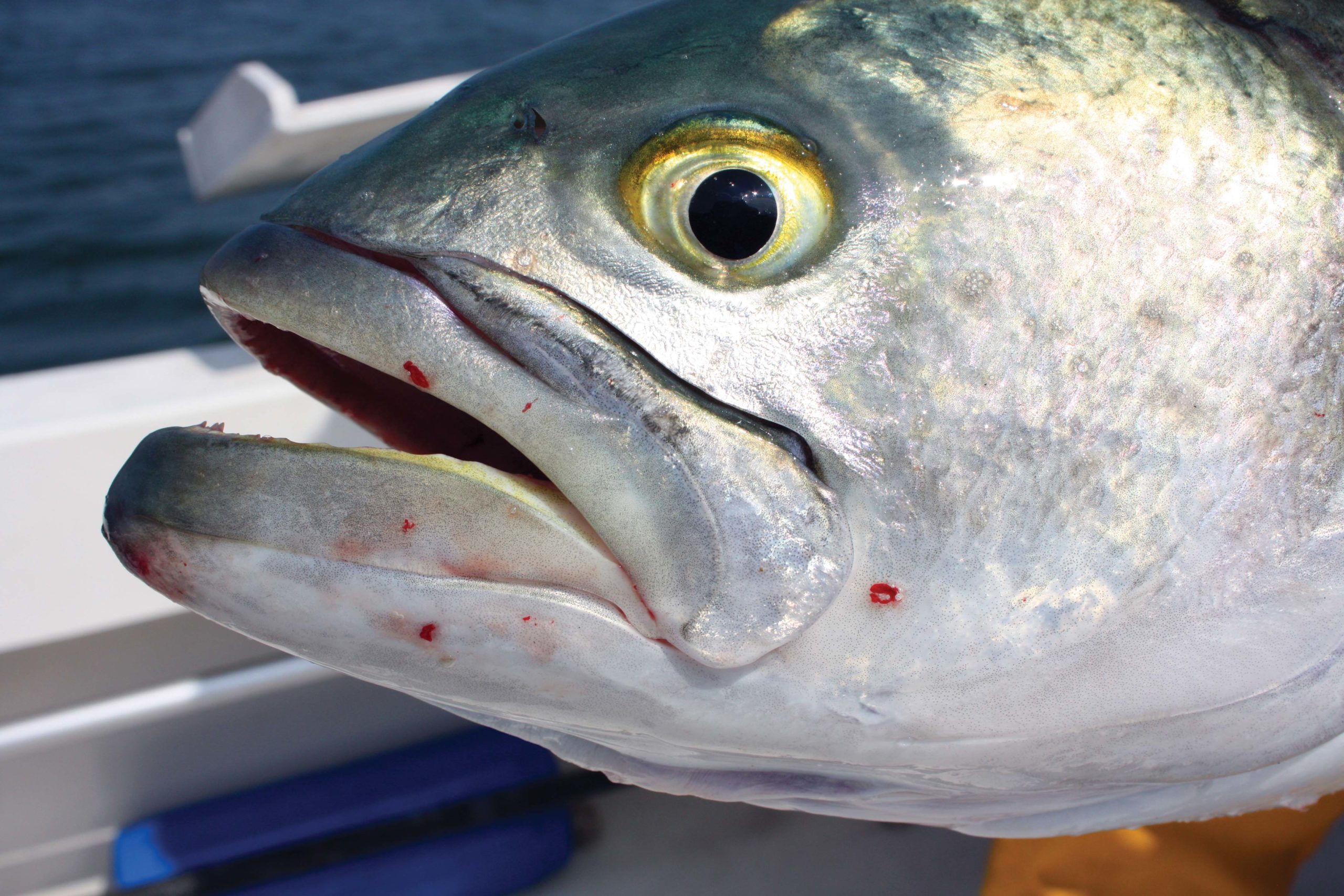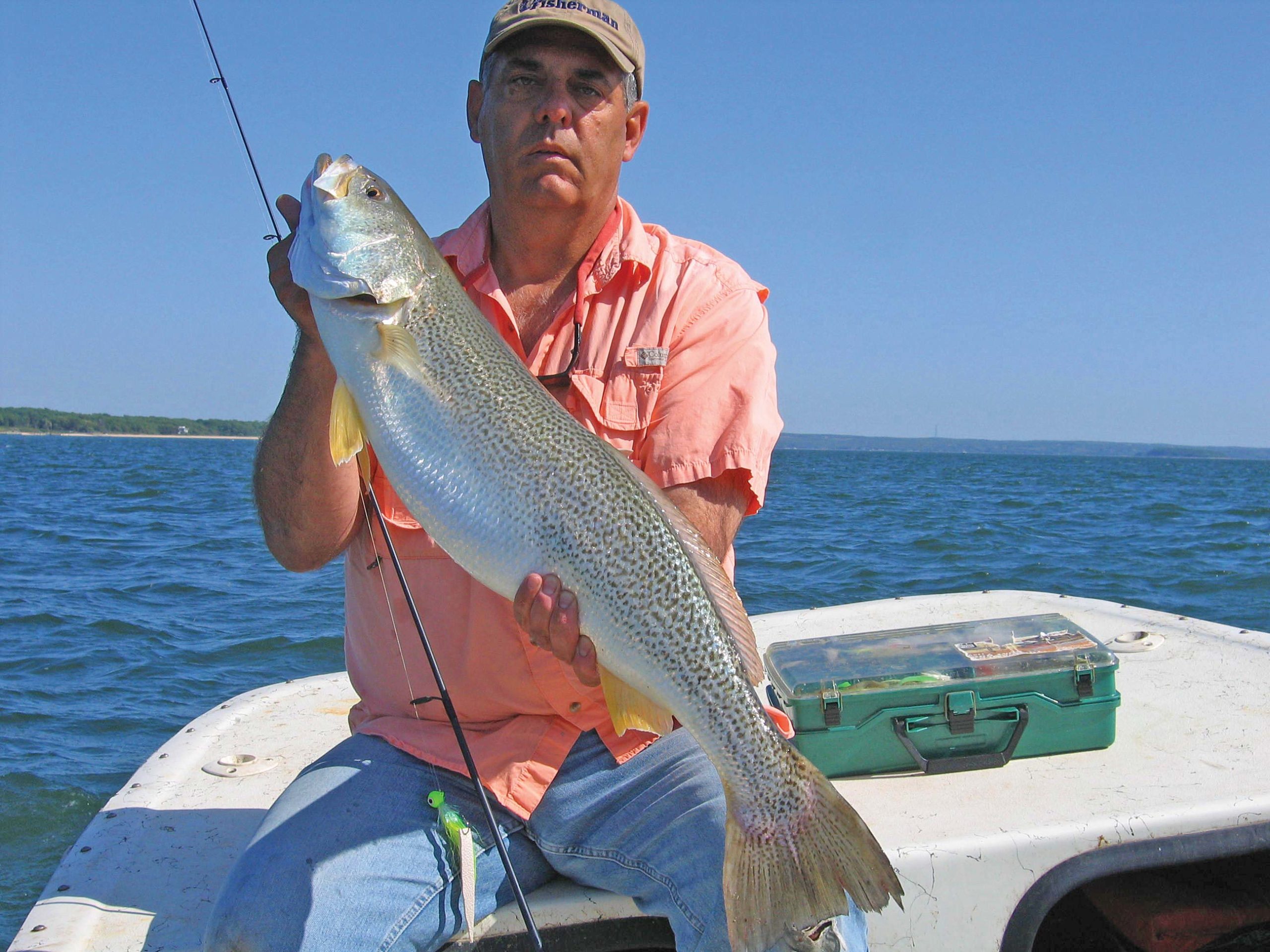
A detailed look at the spawning behavior of some of our most popular local saltwater species.
Like all living things, fish must reproduce, with variations across the species. This process is called spawning, in part, because the females extrude their eggs into the surrounding environment as the males do the same with their sperm (milt). Fertilization of the eggs by the sperm occurs external to the parent fish; not exactly as intimate as one might find in the mammalian world.
The spawning of each of the four primary inshore targets in The Fisherman’s readership area varies in process mostly by season and location. And it is a variety of factors other than drinks and romantic music that gets these fish into the mood.
Summer Flounder
Fluke, like a few of the other species discussed here, mislead many anglers with where and when they spawn. Because adults of other species come into bays and estuaries to spawn, anglers can draw a false corollary when adult fluke migrate inshore from the continental shelf.
In May, larger fluke can often be caught from bays and tidal rivers in New Jersey down into Delaware, but it’s not because they have come there to spawn, but instead they’re in taking advantage of the vast forage found in such areas. Summer flounder hit sexual maturity around age 3 and range from Nova Scotia to the lower Mid-Atlantic States, with most of the population concentrated between Massachusetts and Virginia.
From May to September these flatfish can be found in all inshore areas, as they plump up on forage for their easterly fall migration. It is during this exodus, in October and November, that spawning occurs offshore (Able and Fahay, 1998). Fluke, like most other species discussed here, partake in “broadcast spawning”. This is where males and females release their sperm and eggs simultaneously into the water column. It enhances the probability of successful fertilizations (Crimaldi et. al, 2014), and being off the seafloor protects the fertilized eggs from benthic predators.
Spawning triggers include water temperatures of 54-65 degrees (Smith et. al, 1973; Morse et. al, 1981), water depths of 60 to 150 feet, and likely zooplankton abundance so that larval fluke have forage for growth. The adults then continue to the continental shelf break to over-winter, some at depths of over 500 feet, and return inshore come spring.

Bluefish
Bluefish range far beyond that of just the US east coast and reach sexual maturity at 2 years of age. They closely follow water temperatures, which is in part why bluefish generally have a north to south cyclic component to their migration.
Many adult bluefish invade local bays and estuaries in the spring months; the juveniles follow suit, but linger throughout the summer months. This creates a false impression that bluefish spawn in bays and estuaries. These yellow-eyed, eating machines are similar to fluke insomuch as they spawn offshore near the continental shelf. This entails that a longitudinal component be part of their otherwise normal latitudinal migratory pattern.
Bluefish spawn multiple times, but in two main cohorts. The spring-spawning group does its dance in March and April along the South Atlantic Bight. The summer-spawning group has its fling between June and August, along the Mid-Atlantic Bight, in water temperatures between 64 and 72 degrees (Juanes and Conover et. al, 1995). Circulation currents along the continental shelf greatly sway the survivability of fertilized eggs and larvae. Shoreward currents allow young to reach favorable habitats, while opposing currents reduce survival by sweeping them deeper offshore (Ross et. al, 1991).

Weakfish
Weakfish range the entire east coast, with the bulk of the population found between Virginia and New York (Shepherd et. al, 1997; Lowerre-Barbieri et. al, 1996). Males and females reach sexual maturity at 2 and 3 years of age, respectively (Merriner et. al, 1976). Weakies have a cyclic migration of southeast, offshore to northeast, inshore. Overwintering predominately occurs at the continental shelf off Virginia. Being indeterminate batch spawners, females don’t drop all their eggs all at once, but instead over a period of time (Lowerre-Barbieri et. at, 1996).
Spawning occurs from March to May, and is variable in location, mostly happening in estuarine and nearshore habitats. In fact, unlike the assist from flowers, music, and intimacy for our corresponding human endeavor, successful weakfish spawns are greatly aided by brackish waters of certain bays and rivers (Lowerre-Barbiere et. al, 1995). Most adult weakfish, especially the larger individuals, start their offshore movement early in the summer.
With the high abundance of forage for post-spawned adults and artificially-warmed bay water, it is no wonder that many warmer outflow areas near power plants along the coast were often considered the mecca for tiderunners in April and May. Especially with this author’s track record, some may consider the prior sentence a spot burn of the old Oyster Creek Generating Station in Central Jersey; however, that plant has been mostly offline for a few years now.

Striped Bass
Striped bass are anadromous, meaning they spend most of their lives in saltwater while returning to freshwater areas to spawn. Their major spawning regions are the tributaries of the Chesapeake Bay, the Delaware River, the Hudson River, and the Roanoke River (Merriman et. al, 1941; Raney et. al, 1957; Able and Fahay et. al, 1998; Richards and Deuel et. al, 1987). The stock from the latter has a limited range of migration (Boreman and Lewis et.al, 1987).
Historically, most of the east coast’s migratory bass population results from the Chesapeake stock. This may be due to its greater amount of volume, tributaries, and forage as compared to that of the other spawning regions. However, the Hudson and Delaware River stocks may eventually outcompete the southern stocks due to warming waters and policies that improved water quality (Weisburg and Burton et. al, 1993; Chittenden et. al, 1971b).
Other rivers along the Northeast coast can be considered micro-spawning grounds due to the few fish that do spawn there. The few spawners in these less productive areas are likely descendants from when all the northeast rivers, including those in Canada, were replete with bass centuries ago (Litde at. al, 1995).
Tagging and other sampling data suggest that stripers return to their natal rivers to spawn (Mansueti 1961b; Nichols and Miller 1967; Moore and Burton 1975). Within an individual river, spawning grounds may change from year to year (Parley et. al, 1966). This along with anecdotal observations of the author and other anglers along the Striper Coast suggest some spawning ground flexibility forced by conditional changes like increasing water temperatures, pollution, and/or over-fishing. These speculations, however, may be confounded by farm-raised stocks being released into the wild to seed/enhance other spawning locations.
| SAFE HANDLING |
Anglers armed with the knowledge of striper spawning times and locations will appreciate the concentrating power of bottlenecks between ocean and river transition of big old fat fecund female fish. But something to remember when encountering these pre-spawn staging fish or the spawners themselves upon their exit from the rivers is that safe handling and proper release are critical for the future.
|
Female stripers can spawn multiple times, or not at all in single season, reaching sexual maturity between 4 and 8 years of age. Males hit sexual maturity a few years earlier. Depending on the region, stripers spawn between April and June when water temps are between 60 and 68 degrees. This is because this temperature range is around the optimum for embryonic development and survival (Rogers et. al, 1977).
The prime salinity and pH are 0 to 8 ppt and 6.6 to 9, respectively (Morgan et. al, 1973; Booker et. al, 1969). This is why bass choose to spawn in freshwater rivers or the brackish openings to estuaries. The act of striper spawning starts with the female swimming near the surface with multiple males following (Merriman 1941). This broadcast spawn can occur at any time of day, but usually at dusk, dawn, or throughout the night (Setzler et al. 1980).
After spawning, most adult bass leave the rivers and brackish waters for their northeasterly migration. They then make their fall migration south where most overwinter offshore. Some will overwinter in deep trenches in some of majors rivers, like that of the Hudson. Come late winter, the cycle repeats itself when they are ready for another round love.
Understanding the drive and behavior of when these species spawn can help an angler (A) anticipate where and when the fish will arrive, and (B) how to best tailor one’s angling strategy to catch them.




